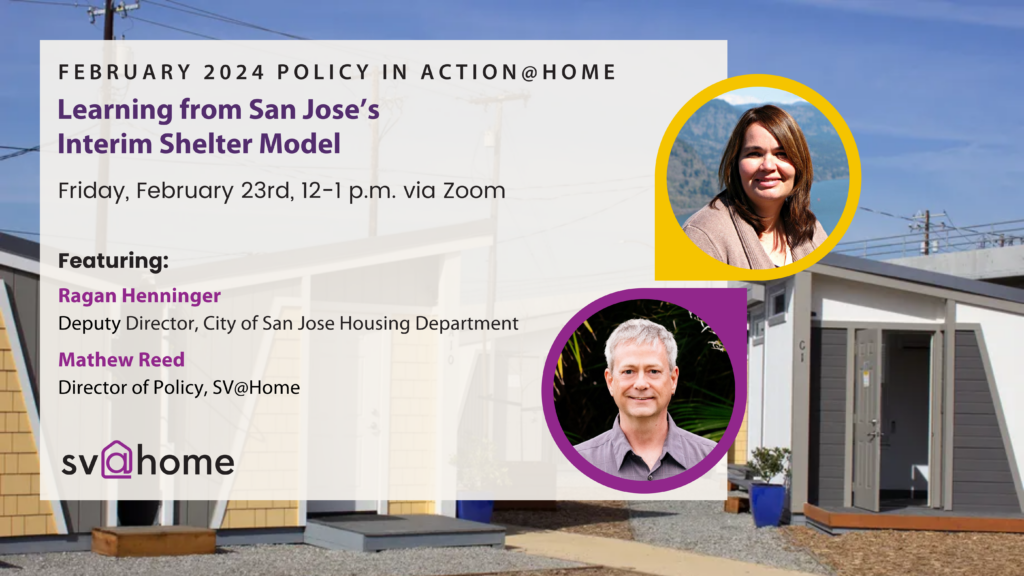Our communities are experiencing a homelessness crisis because of an overwhelming shortage of homes people can afford. Cities across the county have responded by adopting the Santa Clara County Community Plan to End Homelessness, a comprehensive approach that acknowledges the need for a connection between homelessness prevention, interim shelter, and permanent affordable housing. This is especially important now, as we have seen some proposals pit solutions against each other, as though one part of the solution can work in isolation when we know that all of the pieces are necessary.
Emergency interim shelter is an important part of the Community Plan, and the City of San Jose has been a leader in building and operating interim shelter sites. In our February Policy in Action event, Ragan Henninger, Deputy Director of San Jose’s Housing Department, joined us to discuss the real opportunity to learn from the success, costs, and challenges of San Jose’s interim shelter model. View the slides here.
Key takeaways
Defining Interim Shelter. Interim shelter units offer temporary, safe places to sleep with private, lockable rooms. They usually have communal bathrooms and kitchens, although some newer, more expensive units feature in-unit bathrooms and kitchenettes. Sites also provide security and important supportive services to help residents transition to permanent housing. A study found that residents viewed the sites as secure places to regain stability and focus on improving their situation. The city’s interim shelter system now includes converted hotels and safe parking sites, where residents live in their own RVs.
San Jose’s Interim Shelter. San Jose’s emergency interim shelter response has expanded rapidly since 2020, with more than 1,200 emergency interim units, 379 converted hotel units, and 127 safe parking spaces operating or in development. The annual operating costs for interim shelter are substantial, ranging from $25,000 to $50,000 per bed, including expenses for staffing, maintenance, and essential services. Despite extensive efforts, the City has not been able to identify an ongoing source of funding for operations even as the system has expanded, leading to annual budget shortfalls.
Interim Shelter Outcomes. As of June 1, 2023, San Jose’s emergency interim sites have served 1,395 individuals with a 50% success rate (defined as residents leaving for permanent or other temporary housing). Of the residents who successfully transitioned out of shelter, half went to permanent housing, with 75% of those moving to subsidized affordable housing. Another 19% of shelter residents left for shelters, and the rest returned to unsheltered homelessness or fell out of contact with the City. There were not enough permanent affordable homes for all the residents in the interim shelter, but those who were able to move to affordable homes successfully transitioned out of homelessness.
Interim shelter is important as part of a balanced plan that prioritizes building affordable housing so people living in shelters can ultimately move into permanent homes.
